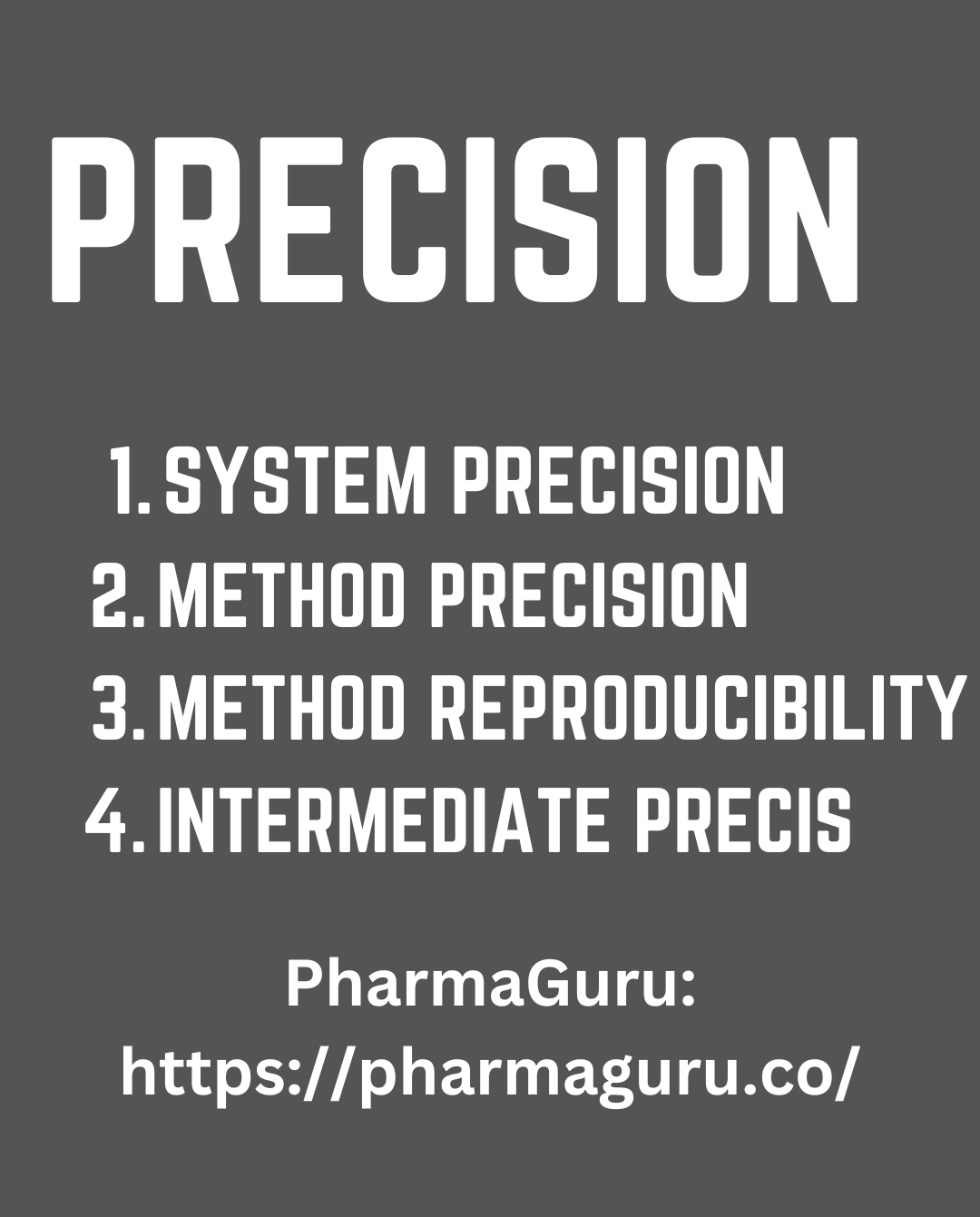
Learn the complete procedure for evaluating precision in method validation, including system precision, method precision, reproducibility, and intermediate precision with real-world case studies
Understanding Precision in Analytical Method Validation: A Comprehensive Guide with Case Studies
Precision in method validation is a critical parameter, reflecting the consistency and reproducibility of results under specific conditions. Ensuring precise measurements is essential for the reliability of any analytical method, particularly in pharmaceutical, chemical, and quality control laboratories. In this article, we delve into the various aspects of precision – system precision, method precision, method reproducibility, and intermediate precision – outlining detailed procedures to evaluate each. Through real-world case studies, we illustrate best practices and common challenges, offering valuable insights for scientists and analysts seeking to enhance method reliability and regulatory compliance.

Precision is subdivided into four categories:
You may like:
Case studies:
Let us consider a drug substance D has the following specifications and we have to perform precision test:
Sample concentration is 1.0 mg/ml for both related substances test and assay test. QL of the method is 0.05%
Example: For impurity A and Drug substance D in Assay test
Prepare impurity A standard solution at 0.2% or 2.0 mcg/ml and inject 6 time (as per chromatographic condition given in the monograph) and calculate RSD of six injections.
Prepare Drug substance D standard at 1.0mg/ml or 1000 mcg/ml and inject 6 times (as per chromatographic condition given in the monograph) and calculate RSD of of RTs and area response.
| Injection No | RT of Impurity A | RT of D (main analyte) | Area of Impurity A | Area of Impurity D |
| 1 | 5.3 | 10.0 | 4212 | 33755 |
| 2 | 5.3 | 10.1 | 4210 | 33701 |
| 3 | 5.2 | 10.2 | 4255 | 33772 |
| 4 | 5.4 | 10.0 | 4220 | 33690 |
| 5 | 5.3 | 10.2 | 4215 | 33700 |
| 6 | 5.3 | 10.2 | 4220 | 33668 |
| Average | 5.3 | 10.1 | 4222 | 33714 |
| RSD | 1.18 | 0.96 | 0.39 | 0.11 |
Conclusion
Example: For impurity A (RS test) and Main analyte D in Related Substances test
Prepare sample solution containing impurity A at 2.0mcg/ (0.2%) and Drug substance D at 1000 mcg/ml and inject 6 time (as per chromatographic condition given in the monograph) and calculate RSD of area % for impurity A .
Calculate assay of main analyte ‘D‘ using main analyte standard solution in all six injections. Calculate the RSD of assay values.
| Injection no | Impurity A ( area %) | Assay of Drug substance (D) (%) |
| 1 | 0.15 | 99.1 |
| 2 | 0.14 | 99.2 |
| 3 | 0.16 | 99.1 |
| 4 | 0.15 | 99.3 |
| 5 | 0.14 | 99.0 |
| 6 | 0.14 | 99,3 |
| Average | 0.147 | 99.17 |
| RSD | 5.4 | 0.12 |
Conclusion:
Reproducibility parameter is performed between the two labs using the following conditions:
Note*:
Method Reproducibility of Impurity A
| Lot | ARD (% value of A) | QC (% value of A) | Difference (%) |
| X | 0.15 | 0,14 | 6.8 |
| Y | 0.16 | 0.14 | 13.3 |
| Z | 0.12 | 0,12 | 0 |
Conclusion
Difference between average result between ARD Lab and QL lab for impurity A is≤ 30 in all three lots ( 6.8% for lot X 13.3% for lot Y and 0 for lot Z). Hence, sample passes the reproducibility test.
Method Reproducibility Test of Assay
| Lot | ARD | QC | Difference |
| X | 99,2 | 99.3 | 0.10 |
| Y | 98.8 | 98.6 | 0.20 |
| Z | 99.3 | 99.4 | 0.10 |
Conclusion
Precision is a vital parameter in analytical method validation, ensuring the reliability and consistency of results. This article aimed to provide you with a clear understanding of precision testing—including system precision, method precision, reproducibility, and intermediate precision—along with practical examples to help you apply these concepts independently. If you have any questions, feedback, or suggestions, feel free to share them in the comments section below. For further assistance, you’re welcome to reach out via the contact form.
You may also want to check out other articles on my blog, such as:
Related Video
References
Abbreviations
Disclaimer: The numerical data used in the tables or calculations are not actual data. It is designed to explain the topic.
Precision contains system precision, method precision and reproductivity or intermediate precision. In the system precision six injections are made at the specification level and acceptance criteria is decided on RSD of area response of six injections.
In the method precision six sample preparations are made, and assay or impurity is calculated for each solution. Acceptance criteria is decided on RSD of area response of six injections.
In method reproducibility, three samples are analysed between sending laboratory and receiving laboratory. Acceptance criteria is decided on % difference of result between the two laboratories.
Quick Links